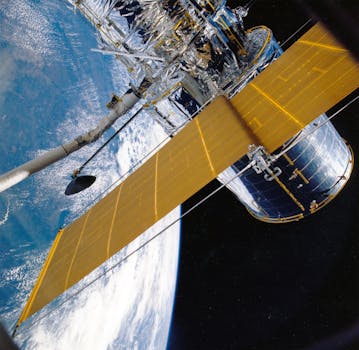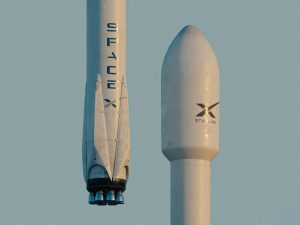
LEO Satellites: Revolutionizing Global Connectivity with WordPress
LEO satellites, or Low Earth Orbit satellites, are a type of satellite that operates at an altitude of around 160 to 2,000 kilometers above the Earth’s surface. These satellites have been gaining popularity in recent years due to their ability to provide high-speed, low-latency connectivity to remote and underserved areas. With the rise of WordPress, a popular content management system, we can now explore the impact of LEO satellites on global connectivity and how they are changing the way we communicate.
At the beginning of our exploration of LEO satellites, we must understand the basics of how they work. LEO satellites are launched into orbit around the Earth and use a network of ground stations to communicate with users on the ground. They operate at a much lower altitude than traditional geostationary satellites, which allows them to provide faster and more reliable connectivity. This makes them ideal for applications such as broadband internet, voice over internet protocol (VoIP), and remote sensing.
How LEO Satellites Work
LEO satellites use a combination of advanced technologies to provide high-speed connectivity. They are equipped with high-gain antennas that allow them to communicate with ground stations and other satellites in the network. The satellites also use advanced propulsion systems to maintain their orbit and ensure that they remain in contact with the ground stations. This allows them to provide continuous coverage to users on the ground, even in remote and underserved areas.
One of the key benefits of LEO satellites is their ability to provide low-latency connectivity. Because they operate at a lower altitude than traditional satellites, they have a shorter distance to travel to communicate with ground stations. This reduces the latency, or delay, that occurs when sending and receiving data. This makes LEO satellites ideal for applications that require real-time communication, such as video conferencing and online gaming.
Applications of LEO Satellites
LEO satellites have a wide range of applications, from broadband internet to remote sensing. They can be used to provide connectivity to remote and underserved areas, such as rural communities and developing countries. They can also be used to support disaster relief efforts, such as providing communication services to emergency responders and affected communities.
LEO satellites are also being used for remote sensing applications, such as earth observation and weather forecasting. They can be equipped with advanced sensors and cameras that allow them to collect high-resolution images and data about the Earth’s surface. This data can be used to support a wide range of applications, from climate modeling to agricultural monitoring.
Future of LEO Satellites
The future of LEO satellites is exciting and promising. With the rise of new satellite constellations, such as SpaceX’s Starlink and Amazon’s Kuiper Systems, we can expect to see even more advanced and capable LEO satellites in the coming years. These constellations will provide global coverage and support a wide range of applications, from broadband internet to remote sensing.
WordPress, as a popular content management system, will play a crucial role in the development and deployment of LEO satellite technology. With its ease of use and flexibility, WordPress can be used to create custom websites and applications that support LEO satellite-based services. This will enable developers and users to take full advantage of the capabilities of LEO satellites and provide new and innovative services to users around the world.
In conclusion, LEO satellites are revolutionizing global connectivity and are changing the way we communicate. With their ability to provide high-speed, low-latency connectivity to remote and underserved areas, they are ideal for a wide range of applications, from broadband internet to remote sensing. As WordPress continues to evolve and improve, we can expect to see even more innovative and advanced LEO satellite-based services in the coming years.


